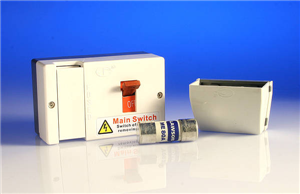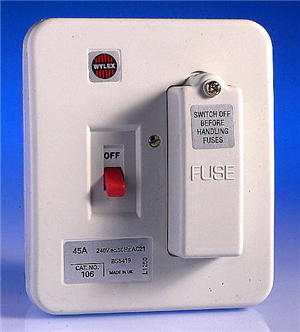What is the essential difference between a switchfuse and a 1-way consumer unit?
Chris Pearson:
OK, I have a white plastic box on the wall of my house; or in fact, two of them. One has the DNO's and supplier's tackle and the other has a switch-fuse. I reckon that both are my boxes on my land. My land! So where is the legal basis for the DNO "owning" one of them?
The boxes belong to you. If a door falls of a box, it's up to you to replace it at your expense. But if you expect them to supply you with gas or electricity, then you need to provide a box that is acceptable to them.
An independent stand-alone isolator, or alternatively an isolating switch/fuse or isolating fuse/switch is not "similar switchgear"


UKPN:
Ascertaining whether a plastic isolator/sw/fuse is allowable under the "wiring regulations" would be futile anyway because that question has been thrown around for years and no one from the "institution has stuck their head above the parapet and given a definitive answer.
Regards, UKPN.
That's not true, the words are in BS 7671 itself.
Consumer unit is defined in the standard. It's an assembly with a main switch and protective devices for the control and distribution of electrical energy.
An independent stand-alone isolator, or alternatively an isolating switch/fuse or isolating fuse/switch is not "similar switchgear" ... otherwise we couldn't fit standard shower isolators or cooker control units in domestic premises. It could also be argued that an enclosure containing a single RCD, say for a shower, is not "similar switchgear" as it does not include for "distribution", it's a dedicated device (similar, the SRCD).
However, in full agreement with you, UKPN, on the position regarding fitting an isolator and loosening meter tails ... bring back 2-screw type terminals, or lugs, for larger CSA cable.

We're about to take you to the IET registration website. Don't worry though, you'll be sent straight back to the community after completing the registration.
Continue to the IET registration site